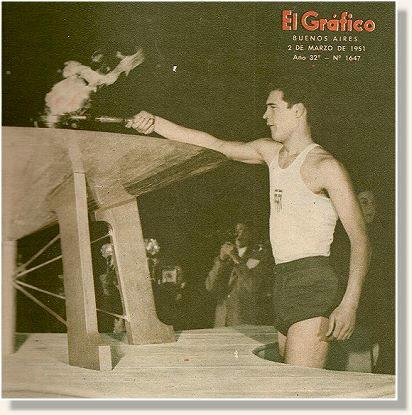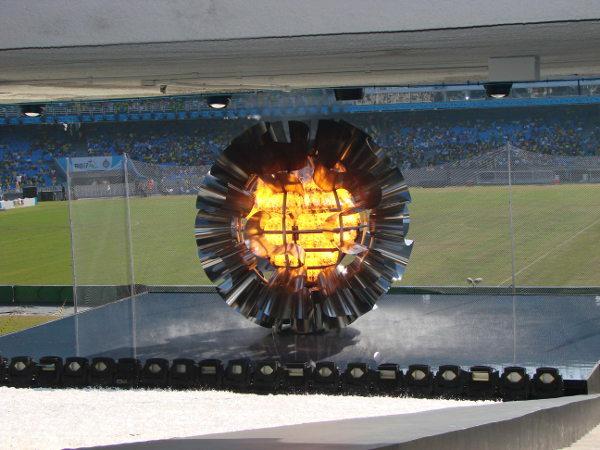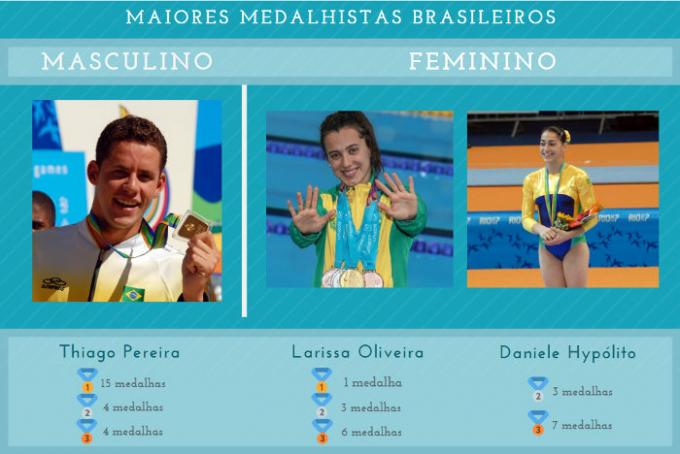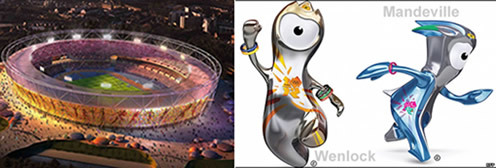You Pan American Games or Pan are among the best known competitions in the world and are held every four years, bringing together athletes from Central America, North America and South America to compete in various sports sports.
The venue for the games is defined six years in advance, and there is usually a rotation between the three continents. Between 1971 and 2011, this rotation took place, but in recent editions there was a repetition of continent. North America hosted the games in 2011 and 2015, and South America in 2019 and 2023 (next).
Know more:Brazilian Championship – history and champions
The modalities of the Pan American Games are varied and many of them coincide with those played in the Olympics, since the Pan counts as a direct classification for some Olympic modalities.
![Opening ceremony of the Pan American Games in Rio de Janeiro, in 2007. [1]](/f/32d5df0a373cefd881b93d28e6e03c7e.jpg)
History
THE idealization of the Pan American Games took place in 1932, when sports representatives from several countries in the Americas had the idea of creating a competition that would involve all countries of the American continents. Thus, in 1940, the
I Pan American Sports Congress, in Buenos Aires, Argentina, and it was decided that the first competition would be held there in 1942.
The initial schedule was canceled due to the ssecond world war, also responsible for the cessation of various activities. The same happened, for example, with the soccer World Cup.
With the end of the conflict, sporting events returned, and in 1951, the first edition of the Pan American Games was held in Buenos Aires. The tournament was attended by 21 countries (Argentina, Brazil, Chile, Colombia, Costa Rica, Cuba, El Salvador, Ecuador, United States, Guatemala, Guyana French, Haiti, Jamaica, Mexico, Nicaragua, Panama, Paraguay, Peru, Trinidad and Tobago, Uruguay, and Venezuela) gathering 2513 athletes for the dispute of 18 modalities. In this first edition, Argentina was the champion in the number of medals.
See too:Copa Sudamericana – the second most important tournament in South America
Four years later, in 1955, the Pan American Sports Organization (Odepa), based in Mexico City, which was responsible for conducting the event. Since then, the games have been held regularly every four years, changing only the participating countries, the modalities played and the number of athletes. In all, 45 countries have already participated in the competition.
North America: Canada; U.S; Mexico.
South America: Argentina; Bolivia; Brazil; Chile; Colombia; Ecuador; Guyana; French Guiana; Paraguay; Peru; Suriname; Uruguay; Venezuela.
Central America: Antigua and Barbuda; Netherlands Antilles; Aruba; Bahamas; Barbados; Belize; Bermuda; Cuba; Dominica; El Salvador; Grenade; Guadeloupe; Guatemala; Haiti; Honduras; Cayman Islands; US Virgin Islands; British Virgin Islands; Jamaica; Martinique; Nicaragua; Panama; Puerto Rico; Dominican Republic; Saint Lucia; Saint Kitts and Nevis; Saint Vincent and the Grenadines; Trinidad and Tobago.
Do not stop now... There's more after the advertising ;)
Pan American venues
Have been played, until today, 18 issues of the Pan American Games. O Canada and Mexico received the tournament three times, being the countries that hosted the most in history. In Brazil, the games were held twice: in 1963, in São Paulo, and in 2007, in Rio de Janeiro.
See all Pan American Games venues:
Year |
Thirst |
1951 |
Buenos Aires (Argentina) |
1955 |
Mexico City (Mexico) |
1959 |
Chicago (United States) |
1963 |
São Paulo Brazil) |
1967 |
Winnipeg (Canada) |
1971 |
Cali (Colombia) |
1975 |
Mexico City (Mexico) |
1979 |
San Juan (Puerto Rico) |
1983 |
Caracas (Venezuela) |
1987 |
Indianapolis (United States) |
1991 |
Havana (Cuba) |
1995 |
Mar del Plata (Argentina) |
1999 |
Winnipeg (Canada) |
2003 |
Santo Domingo (Dominican Republic) |
2007 |
Rio de janeiro Brazil) |
2011 |
Guadalajara (Mexico) |
2015 |
Toronto (Canada) |
2019 |
Lima (Peru) |
2023* |
Santiago (Chile) |
*Next issue
Pan American Games in Brazil
In the competition held in Sao Paulo 1,665 athletes participated, from 22 countries, who competed in 19 modalities. This was the edition with the fewest number of athletes. The United States led the ranking with 199 medals, followed by Brazil, with 52.
More than 40 years later, Brazil returned to host the competition, in the Rio de Janeiro. This time 42 countries participated in the event, with 5,633 athletes. 34 different sports were disputed and, once again, the United States finished the tournament as leaders, winning 237 medals. Cuba took second place, with 135 medals. Brazil received 157 medals, but took the third position because Cuba obtained a greater number of gold medals.

Brazil Olympic Committee (COB)
Founded in 1914, COB is the responsible for managing and administering national sport. He is directly linked to the confederations of each sport to promote the Brazil team in the various competitions that are disputed by the teams of each one of them. The body is also responsible for protecting and promoting the country's Olympic values and strengthening Brazil's image in competitions.
See too: History of Maracanã – the stadium that hosted the 2007 Pan
Team Brazil and records
![Team Brazil record medals in the Pan 2019, in Lima. [2]](/f/bd3000dd09f9a0a2a4ea875a2245d132.jpg)
THE best campaign of the Brazil team at the Pan-American was held in 2019, in the Lima Games, in Peru. The Brazilian team stayed in the second place overall, as happened at the Pan de São Paulo, with a record of 171 medals: 55 gold, 45 silver and 71 bronze.
Among the main Brazilian medalists in the Pan American Games are the gymnast Daniele Hypólito and the swimmer Larissa Oliveira, with 10 medals each for women. Larissa also holds the Brazilian brand with the most podiums in a single edition of the Pan: seven, in 2019.
On the men's side, the lead is with the swimmer Thiago Pereira. He has 23 medals in the games, 15 of which are gold, four silver and four bronze.

medals
You U.S they are the country with the highest number of medals ever won in editions of the Pan American Games. In addition to being on top with your 4713 medals, the country was also the one that won the most medals for editions of the games. Of the 18 editions held, the North Americans only failed to win more medals in two of them, 1951 and 1991, won by Argentina and Cuba, respectively.
See the 10 countries with the most medals*:
Position |
Parents |
Gold |
Silver |
Bronze |
TOTAL |
1 |
U.S |
2064 |
1542 |
1107 |
4713 |
2 |
Cuba |
908 |
620 |
596 |
2124 |
3 |
Canada |
491 |
721 |
855 |
2067 |
4 |
Brazil |
384 |
402 |
591 |
1377 |
5 |
Argentina |
326 |
366 |
468 |
1160 |
6 |
Mexico |
258 |
324 |
565 |
1147 |
7 |
Colombia |
136 |
170 |
262 |
568 |
8 |
Venezuela |
102 |
220 |
296 |
618 |
9 |
Chile |
57 |
110 |
169 |
336 |
10 |
Dominican Republic |
39 |
76 |
129 |
244 |
*Numbers updated in 2019
sports and modalities
The Pan American Games concentrate several sports divided into different modalities, which can have an indefinite variation in the amount from one edition to another. O COI considers a sport that has a federation and, within it, are the modalities. Example: gymnastics is a sport of the International Gymnastics Federation (FIG) that has the modalities artistic, rhythmic and trampoline.
See some sports and modalities played at the Pan American Games:
Athletics
Badminton
Basketball
Baseball
Bowling
Boxing
Canoeing
karate
Cycling
Fencing
water skiing
bodybuilding
Fronton
Soccer
Fitness
Golf
Handball
Equestrianism
hockey on the grass
Judo
Weightlifting
artistic swimming
Swimming
roller skating
Basque pellet
Modern Pentathlon
Water polo
Racquetball
rowing
seven rugby
Diving
Softball
Surfing
squash
Taekwondo
Sneakers
Table tennis
Shooting Sports
archery
triathlon
Candle
Volleyball
Beach volleyball
torch and mascot
As in the Olympic Games, the torch is part of the Pan American tradition. In the first edition, in 1951, in Argentina, the torch was lit in Olympia, Greece, and went on to the event's headquarters. Since then, traditionally, the torch is lit by the Aztecs in their ancient temples.. In 1963, in the games held in Brazil, there was an exception: the torch was lit by the Carajás Indians, in Brasília.
Know more:How the Olympic Torch Works: Lighting, Relay and Fabrication
The mascot is another important and historic element for the Pan American Games, as involves the cultural characteristics of their headquarters. However, it appeared at the Pan-American in 1979, in San Juan, Puerto Rico.
![Cauê, the sun chosen as a mascot at Pan do Rio, in 2007. [3]](/f/27822cc74f7f82195d422f6a3afe8453.jpg)
THE first mascot was afrog, common in Puerto Rico, and named Coqui. Many mascots have gone through the history of Pan. In Brazil, in 2007, the chosen one was Cauê, a sun, characterizing part of the history of Rio de Janeiro. The name was chosen by popular vote.
Pan American Winter Games
In 1990 a single edition of the Pan American Winter Games in Las Leñas, Argentina, involving sports practiced on snow and ice. Only eight countries participated in the dispute (Argentina, Bolivia, Brazil, Canada, Chile, Colombia, United States and Mexico). Due to weather problems and lack of snow, not all games could be played and only the United States and Canada won medals.
The idea was that the event would also be held every four years, and the second edition was scheduled to be held in Santiago, Chile. However, the games didn't happen.
Also access:Winter Olympic Games - modalities
Parapan American Games
THE first edition of the Parapan American Games was held in 1967, in Winnipeg, Canada, as Pan American Games for Paraplegics. At the time, only six countries participated in the dispute in which athletes competed in wheelchairs. This championship format had nine editions until 1995. Last year, Argentina, which hosted the Pan American Games, separately hosted other games aimed at visually impaired, wheelchair-bound and mentally handicapped athletes.
It was later decided that a single event would cover all athletes with some type of disability: the Parapan American Games, or parapan, as it is better known. The Paralympic Committee of the Americas is responsible for organizing the event, which has been taking place since 1999. In 2017 it was defined that the Parapans would be held in the host cities of the Pan American Games, and currently they happen a few days after the end of these.
Photo credits
[1]Ricardo Stuckert/PR / commons
[2]Alexandre Loureiro/COB - reproduction
[3]Nicholas Bittencourt / commons
By Giullya Franco
Journalist

